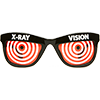# The Limits of Post-Modern Cynicism in the Evaluation of AI Art
In the modern age, the advance of artificial intelligence has reached a point where machines can generate art, leading to a host of ethical, philosophical, and aesthetic questions. One of the more pervasive attitudes towards AI art comes from a post-modern cynicism that questions the validity, originality, and worth of machine-generated creations. While skepticism is an essential aspect of intellectual inquiry, an over-reliance on post-modern cynicism can become insidious, limiting the scope of what we understand art to be. This essay aims to examine the limitations of this perspective in assessing the value and impact of AI-generated art.
## Questioning Authenticity: A Double-Edged Sword
Post-modernism, by its very nature, aims to dismantle grand narratives and scrutinize the assumptions that underlie various forms of human activity, including art. In doing so, it offers valuable insights into the constructs that shape our understanding of the world. However, when this analytical stance shifts into cynicism, it risks devolving into a form of intellectual nihilism that dismisses new phenomena without giving them their due consideration.
For example, critics may argue that art produced by AI lacks the emotional depth or conceptual complexity of human-generated art. But this assumption is based on a limited definition of what constitutes emotional depth or complexity. After all, is it not the role of new mediums to challenge these definitions? In pigeonholing AI art as lacking authenticity or emotional nuance, we fail to recognize that art has evolved through the ages with the advent of new technologies and mediums—from cave paintings to digital art.
## Overlooking Collaborative Creativity
AI in art often functions in collaboration with human artists who design the algorithms, set the parameters, and even curate the final output. The human-AI partnership introduces a new dynamic into the creative process, one that melds human intent with machine-driven randomness. To dismiss this as inauthentic or derivative overlooks the innovative ways in which humans and machines can co-create. It undermines the human labor, expertise, and vision that go into programming the AI, not to mention the artistic decisions that lead to the final piece.
## Restricting Artistic Evolution
Art has always been a reflection of societal advances, be it in the form of new materials like oil paints in the Renaissance or the advent of photography in the 19th century. The question shouldn't be whether AI-generated art is 'real' art, but rather what new perspectives and techniques it can bring to the artistic landscape. Post-modern cynicism, in its reflexive dismissal, risks stunting the growth of art, restricting it to predefined boxes and inhibiting its evolution.
While post-modern cynicism offers valuable tools for deconstructing and critiquing societal narratives, it becomes problematic when used to dismiss outright the contributions of AI to the world of art. The advance of technology poses new questions about the nature of creativity, collaboration, and artistic value—questions that deserve more than a cynical shrug. By embracing, rather than denigrating, the possibilities offered by AI art, we open ourselves to a richer, more nuanced understanding of what art can be in the digital age.
The cynicism around AI-generated art can also be viewed through the lens of capitalism, which tends to commodify all forms of human activity, including art and creativity. In a capitalist society, value is often equated with labor, originality, and scarcity, parameters that can be hard to apply to AI art, leading to its devaluation.
### Commodification of Originality
In capitalism, the "original" work of a famous artist can command astronomical prices, not just because of aesthetic value, but also because of its perceived authenticity and the labor that went into it. AI-generated art disrupts this notion of originality and scarcity, as algorithms can produce multiple pieces in a short period, raising questions about its 'value' in a market-driven society.
### Human Labor vs. Machine Labor
The labor theory of value, central to capitalism, argues that the value of a commodity is related to the amount of labor required to produce it. In the case of AI-generated art, the 'labor' is primarily that of a machine, challenging traditional capitalist notions of value and sparking cynicism. The human effort in programming and training the AI is often overlooked, as it doesn't fit neatly into established categories of artistic labor.
### Gatekeeping and Elitism
Capitalism often creates elites who act as gatekeepers, defining what is 'valuable' or 'worthwhile' in society. This includes the art world, which is dominated by galleries, critics, and collectors. The democratization of art through AI challenges this gatekeeping. Cynicism about AI art may be a way to maintain established hierarchies and keep art a 'scarce' and 'valuable' commodity controlled by a few.
### Intellectual Property Concerns
In a capitalist system, ownership is a significant concern. The ambiguity around who owns AI-generated art—Is it the programmer? The operator of the machine? The machine itself?—creates tension and cynicism, as it challenges traditional models of ownership and copyright, which are cornerstones of capitalist value creation.
In conclusion, the cynicism surrounding AI art isn't just a cultural or aesthetic stance; it's a symptom of deeper tensions arising from the way capitalism measures and assigns value. This cynicism can serve to protect established norms and power structures, at the expense of innovation and broader cultural development.
Algorithmic and chaotic processes have long been integral to the creation of art, weaving a complex tapestry of order and randomness that characterizes much of human creativity. Artists throughout history have exploited these elements, whether consciously or unconsciously, to create works of staggering complexity and beauty.
### Traditional Algorithmic Processes in Art
Long before the term 'algorithm' became a staple in modern parlance, artists were employing formulaic approaches to generate their creations. In Islamic art, geometric patterns adhere to specific rules that guide the artist. The Golden Ratio, a mathematical ratio found in nature, has been applied in countless artworks throughout history, from the Parthenon in Greece to Leonardo da Vinci's "Mona Lisa." Musical compositions, too, often follow structural algorithms—consider Johann Sebastian Bach's fugues or the structured improvisation in Jazz.
### Chaos and Noise in Art
Artists have also embraced chaotic and random elements as essential aspects of the creative process. Jackson Pollock's drip paintings, for example, are a study in controlled chaos, relying on gravity, viscosity, and the artist's movement to dictate the final form. Similarly, the Dadaist movement and artists like Jean Arp used chance operations to create collages and poems, literally letting the roll of dice determine the arrangement of words or shapes. Even photographers capturing the 'decisive moment' are tapping into the chaotic interplay of light, movement, and time.
### Algorithmic and Chaotic Processes in AI Art
In the context of AI-generated art, both algorithmic and chaotic processes are at play. The algorithms provide a framework that guides the AI, defining its possibilities and limitations. However, within that algorithmic structure, there is room for randomness or 'noise.' This stochastic element ensures that the AI's output is not merely repetitive but contains unexpected and novel formations.
For instance, in Generative Adversarial Networks (GANs), one neural network generates images, while another judges them. The generator improves by introducing variations—essentially, 'noise'—into its output, learning from the chaotic iterations that fool the judging network. This interplay between algorithmic strictness and chaotic randomness results in creations that are both ordered and unexpected.
### Concluding Thoughts
The juxtaposition of algorithmic rules and chaotic elements in AI art can be seen as a continuation of long-standing artistic traditions. Far from being antithetical to 'true art,' AI embraces the complexities that have always been a part of human creativity. By understanding these roots, we can move beyond the limitations of post-modern cynicism and appreciate AI art as another chapter in the ever-evolving story of human expression.










